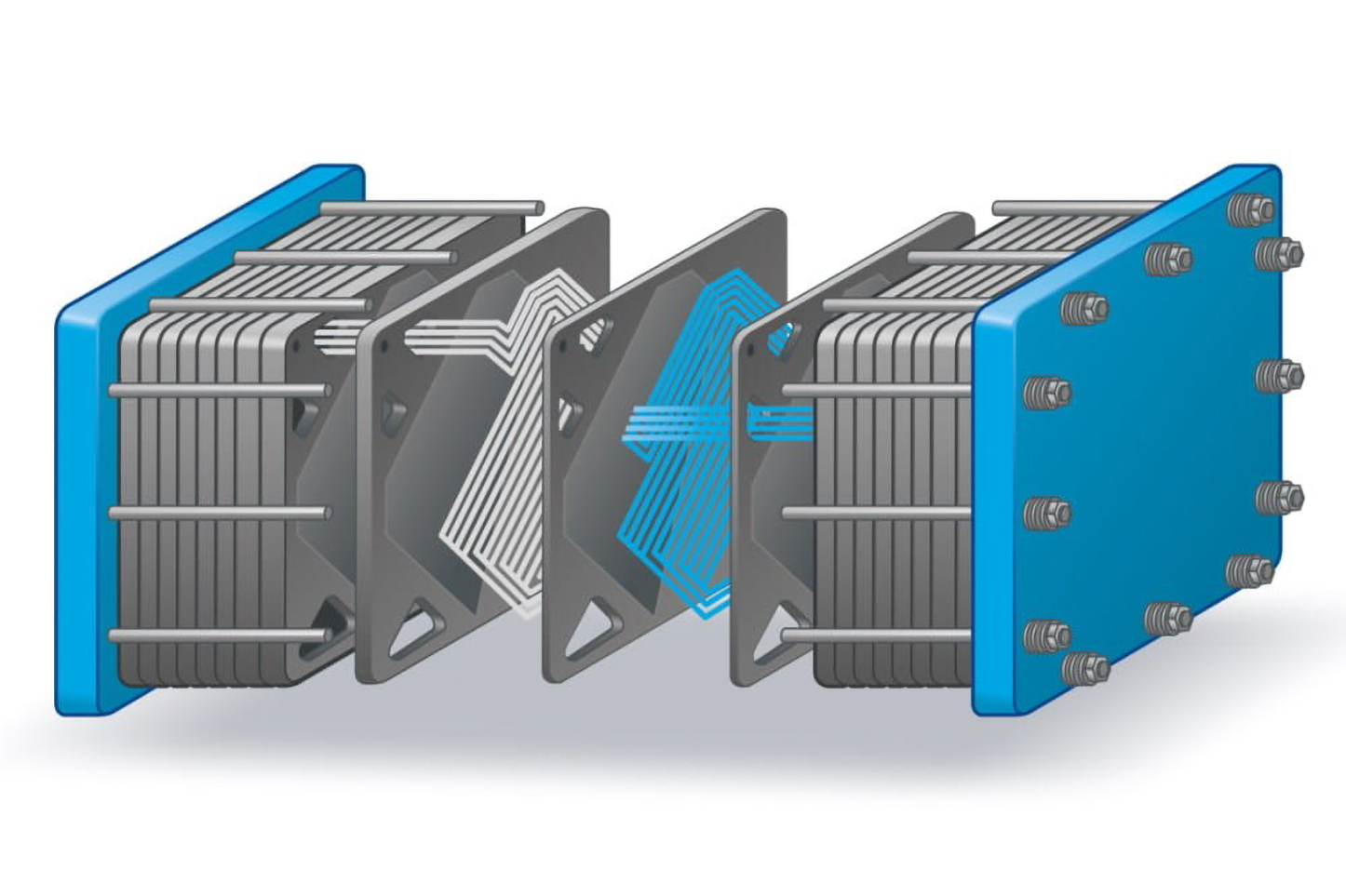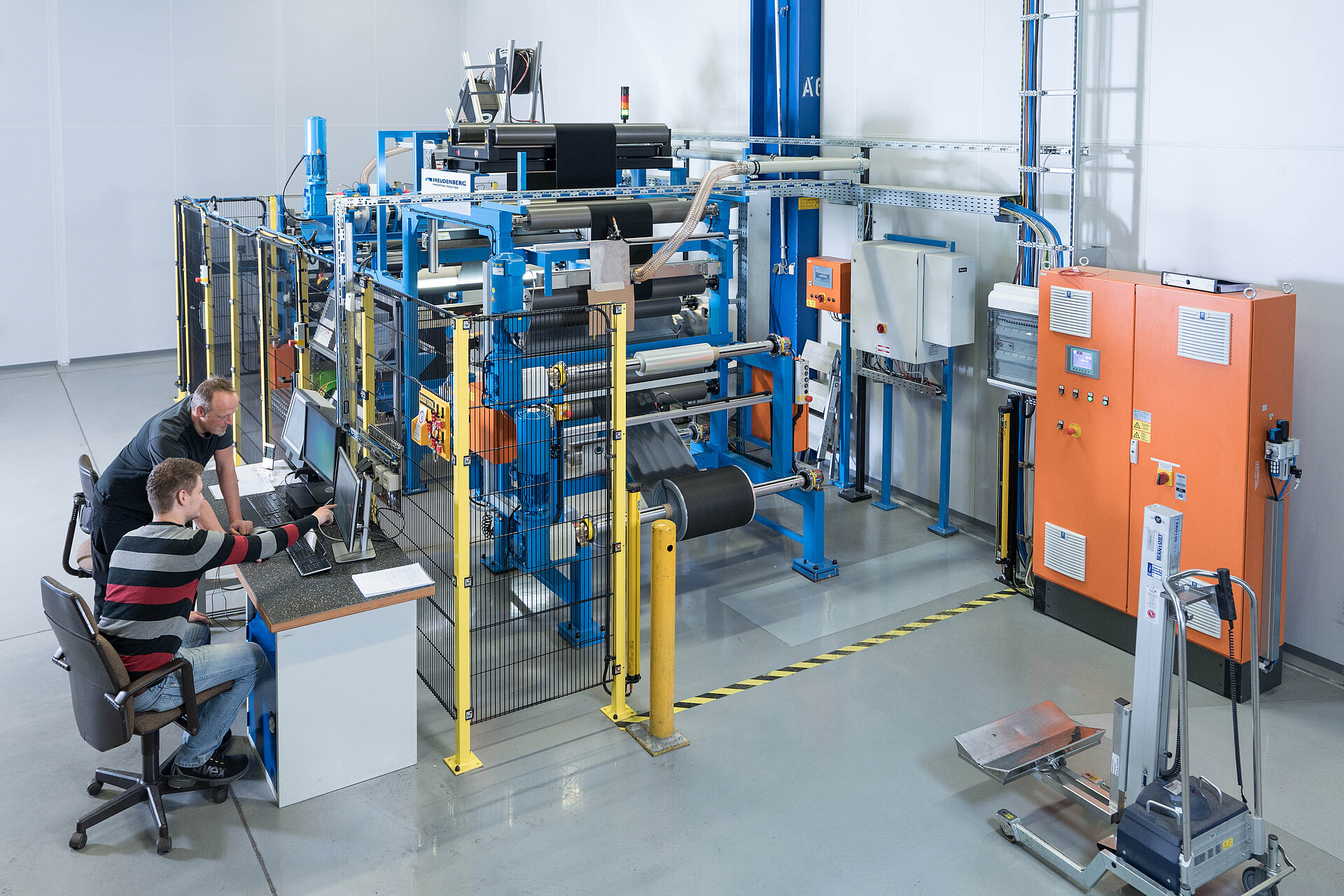High-performance key components are needed for hydrogen to establish itself as the energy source of the future. Freudenberg already has suitable products for the hydrogen infrastructure available now.
As the market for hydrogen applications grows worldwide, the opportunities also increase for Freudenberg’s Business Groups to put their know-how and solutions to use in driving this technology forward. Freudenberg products are already in worldwide use in hydrogen production, storage and transport.
Freudenberg Sealing Technologies (FST), for example, uses its expertise to manufacture seals for electrolyzers. Here, special sealing solutions help to prolong the service life and improve the process reliability of the electrolysis stacks while reducing the complexity of the system. FST products significantly simplify the assembly of the stacks and enable electrolyzer construction in large numbers.
Where up to ten O-rings or seals used to be needed to seal the cell at various points, a single, integrated sealing solution will handle this task in the future.
Green hydrogen produced by electrolysis will spread widely in the coming years, with the big transformation starting in 2025.
Artur Mähne, Freudenberg Sealing Technologies

Artur Mähne, global segment manager for Hydrogen Technologies at FST, sees the industry as standing at the start of an expected boom: “Given the industry’s ambitious emissions targets, green hydrogen produced by electrolysis will spread widely in the coming years, with the big transformation starting in 2025 and picking up steam thereafter. In addition to the established companies, we see many new companies entering the market.” A rapidly growing market in which FST has already secured clear advantages. “Thanks to our experience in the fuel cell market and our materials expertise, we can adapt performance metrics such as pressure and temperature, as well as chemical resistance, stability and permeability, to different electrolyzer environments,” adds Mähne, who sees FST as a development partner rather than merely a supplier. “If we are incorporated in the electrolyzer production process at the right time, we can maximize the performance of the sealing solution while reducing development costs and time.”
A truly environmentally friendly alternative
Freudenberg Oil & Gas Technologies (FOGT) will also increasingly be focusing on the hydrogen market in the future. But unlike FST, the company is not focusing on products for electrolysis, but on solutions in the field of blue hydrogen. Clamp connectors and flanges are already being used not only in hydrogen production, but also transport and storage. “Our products’ range of applications in this market is already quite broad,” explains Patrick Rawls, Vice President Engineering at FOGT. “From cryotank technology and hydrogen processing to large tanker ships, we believe we are in a good position to continue growing in the hydrogen market thanks to our experience with demanding environments and media.” FOGT also has innovative thermoplastic applications for use in loading arms and swivels for hydrogen applications. Another plus: significantly lower amounts of fugitive emissions escape from FOGT connection points such as seals and flanges than from conventional standard industrial connections. “Blue hydrogen is produced from methane in a roundabout way. If methane escapes from leaking connection points, it is much more harmful to the climate than CO2 is,” Rawls continues. “Our technologies reduce fugitive emissions by up to 99 percent and ensure that blue hydrogen is a truly environmentally friendly alternative.”
The global demand from our customers keeps on growing.
Dr. Volker Banhardt, Head of Sales & Marketing Fuel Cell Products at FPM
The Freudenberg Performance Materials (FPM) Business Group has been developing gas diffusion layers (GDL) for fuel cells for over 20 years. One application example: fuel cells produce the electricity which electric vehicle motors need for propulsion by converting hydrogen into electricity directly on board. “The GDL is an essential building block to simplify production and increase the performance and service life of fuel cells,” said Dr. Volker Banhardt, Head of Sales & Marketing Fuel Cell Products at FPM. “The global demand from our customers keeps on growing.”
First of all, the car is fueled with hydrogen, which can be obtained from CO2-neutral electricity production. The fuel cell in the vehicle converts the hydrogen into electricity and heat. How does that work exactly? The heart of the fuel cell is a membrane which catalysts are attached to. This membrane separates the hydrogen from the oxygen and simultaneously transports the positively charged protons from the hydrogen side (anode) to the air side (cathode). These protons react to the atmospheric oxygen at the cathode via catalysts to form water. This generates the electrical energy to run the drivetrain and more. The gas diffusion layer (GDL) plays an important role in the process. “It has to optimally distribute all of the gases to the electrodes of the membrane and transmit the water, heat and electricity,” Rakousky said. “The more homogeneously the gases are distributed, the more electricity is produced, increasing the power density of the fuel cell.” GDLs thus ensure that hydrogen – the energy carrier – and oxygen – the reaction partner – are distributed across the polymer electrolyte membrane (PEM) as evenly as possible.

The Freudenberg Performance Materials Business Group uses its material expertise for highly developed technical nonwovens for the development of gas diffusion layers (GDL) for fuel cells
A new market with great potential
To achieve this, FPM’s experts develop technical nonwovens with high thermal and electronic conductivity, optimum damage protection for the membrane and very good processability. A conductive carbon structure is coated with specially developed substances to handle all of the transport tasks. The carbon fiber structure is easy to compress in the production process thanks to its flexible fiber structure.
Freudenberg is one of the few suppliers on the market to offer large-scale industrial production worldwide. The solutions are already being installed in forklifts and container vehicles. They are also used in buses, trucks and cars. Freudenberg is working on this with customers from every continent.
A new market with great potential is GDL production for electrolyzers, which has already started at FPM. Electrolyzers break water down into its components hydrogen and oxygen. This makes it possible to store green electricity as hydrogen, for example. Demand for electrolyzers for green hydrogen production will rise in the coming years and Freudenberg is working together with its customers to develop suitable solutions for this.
